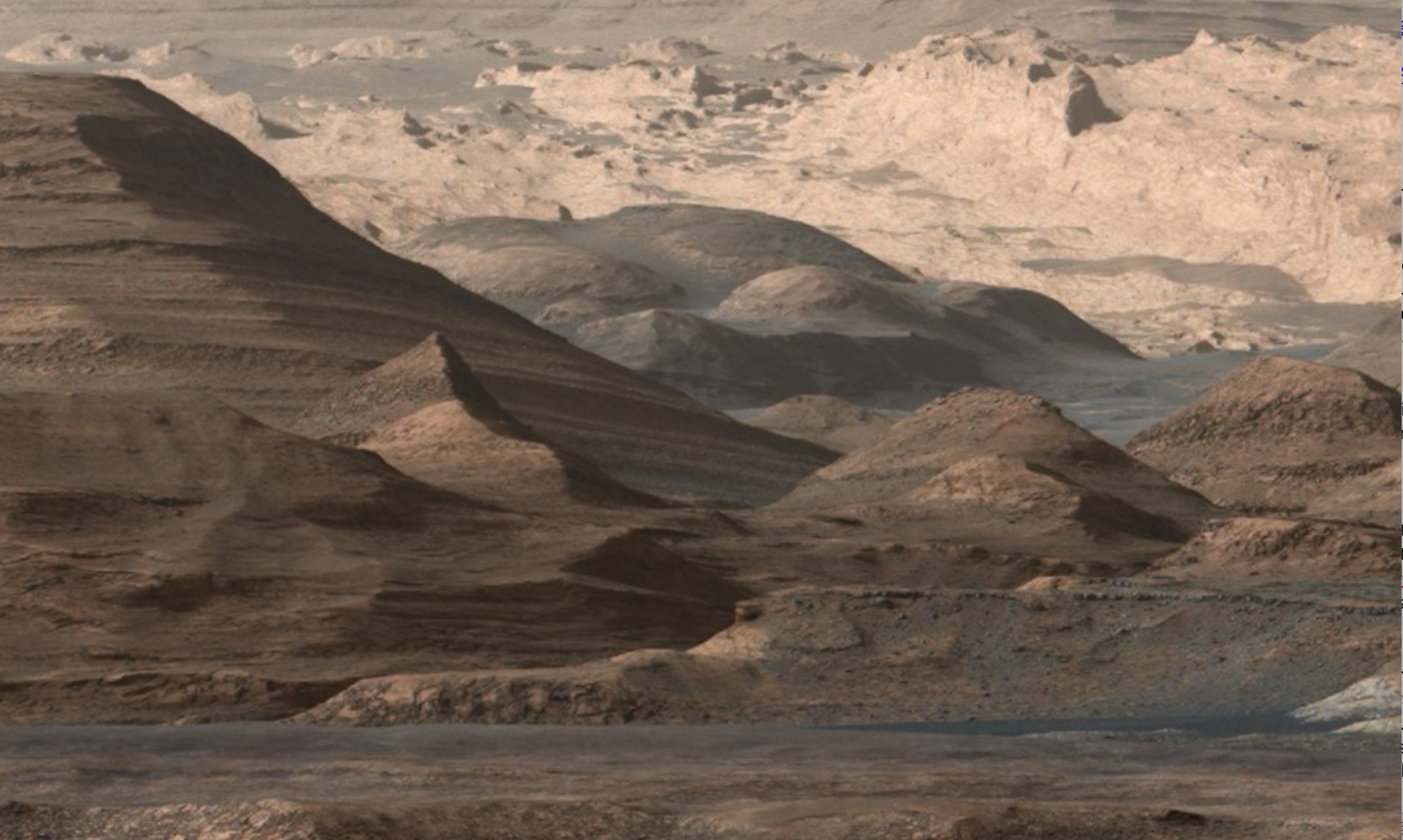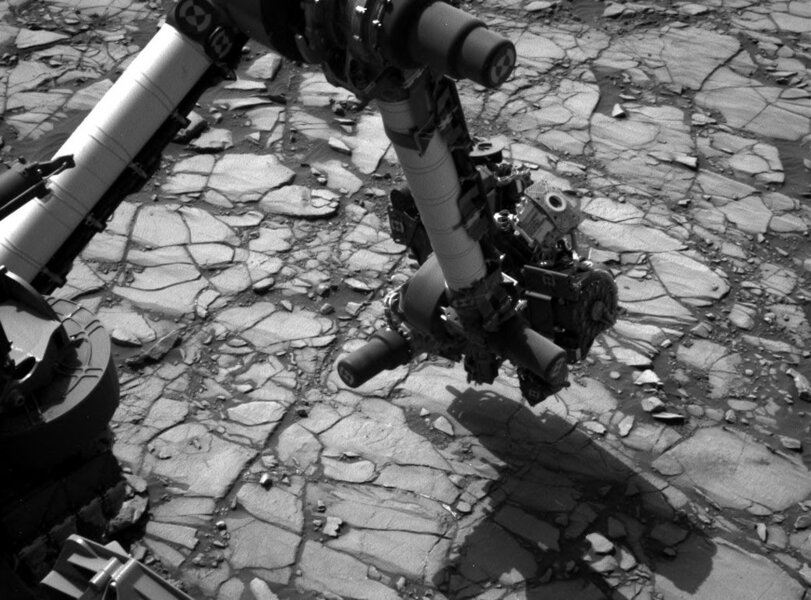Create a free profile to get unlimited access to exclusive videos, sweepstakes, and more!
Something already in your smartphone just measured the gravity on Mars

Imagine measuring gravitational forces on Mars with something that already exists in your smartphone.
While an app designed specifically for Mars hasn’t actually been invented yet, the Curiosity rover is equipped with something your cell has—an accelerometer. Curiosity has no gravimeter to figure how Mount Sharp formed. What it does have is force-measuring navigation equipment that includes an accelerometer. As the rover crawled around the 3-mile mountain in the center of Gale Crater, scientists figured out an ingenious way to find an app for that.
“I realized you can download an app on your phone and, not with much precision, but you can measure [the force of Earth’s gravity] because your phone has accelerometers,” Kevin Lewis, assistant professor at Johns Hopkins University and lead author of a study published in Science, told Gizmodo.
What Lewis and his team wanted to find out was whether Mount Sharp was the result of deposited material accumulating into a mountain or of matter eroding from the inside of Gale Crater. Scientists usually understand the activity of subsurface rocks with gravimetry, or the measurement of changes in the local gravitational field. To make up for a missing gravimeter, they took advantage of the rover’s accelerometer and gyroscopes.
The scientists used acceleration data the rover picked up around Mount Sharp and made adjustments for location, temperature and elevation, all of which could affect its equipment. While this isn’t the most accurate method ever, it did reveal that the rocks Curiosity was rolling over had a lower density than expected. The dirt was also much more porous than the scientists speculated it would be, which is an indicator that the sediment is on the shallow side.
So what does this unexpected use of technology have to say about Mount Sharp?
It seems Gale Crater had already been formed by the time Mount Sharp started rising, so there was no erosion involved in the Martian peak’s formation. It rose from the ground because of sediment that kept blowing into the crater and settling into a pile that would keep growing over the eons.
The study modeled on a cell phone app confirmed existing beliefs about Gale Crater, and though it contradicted some others, it still got us closer to an understanding of what is really happening inside the crater geologically.
“My first impression was that it’s a clever engineering trick to use instruments onboard the rover that weren’t designed as science instruments to actually do science,” Martian geologist and Rice University assistant professor Kirsten Siebach also told Gizmodo. “This pushes us to get a better understanding of what low-porosity rocks might behave like on Mars.”
You can’t deny that, even with its imperfections, the app idea was a flash of genius.
(via Gizmodo)



























